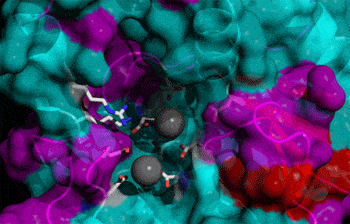Over a couple famous X-files episode, Agent Scully finds branched DNA in her blood and suspects aliens inserted it. Well, Agent Scully may be a medical doctor, but she’s not much of skeptic either since she has to turn to the ol’ “it’s Aliens!” trick to explain mysteries. Someone should send the FBI agent a memo that a team at the University of Sheffield, UK showed how branched DNA molecules are cut from the double-helical structure — something scientists have been looking into for twenty years.
There’s nothing alien about branched DNA. On the contrary, these molecules are generated by the essential process of replication and recombination which happens virtually in every moment for all living things. Every time a cell divides, branched DNA is formed, clinging to the DNA double-helix until enzymes called Flap EndoNuclease (FENs) trim the branches.
Using the Diamond Light Source synchrotron, a giant machine that accelerates electrons to produce X-ray light, the researchers found the FEN threads the DNA branch through a hole in the enzyme . Then the branched DNA is slid along the trunk before being trimmed by the enzyme which acts like a pair of scissors.
“The FENs analysed in the study are very similar to those used in diagnostic tests for genetic diseases, bacteria and viruses. Understanding how they work will help to engineer better and more reliable tests and tools for laboratory research and hospital diagnostics labs,” said Jon Sayers, Professor of Functional Genomics at the University of Sheffield and lead author of the study.
DNA replication is an essential biological process. Since it’s used in all life forms, understanding how it works at a molecule level might help curb genetic diseases, besides helping advance the field.
“The enzymes that carry out this process are sometimes involved in cancer. They have been linked to tumour progression and mutation, so this discovery could pave the way for better diagnostics or new drugs,” said Sayers. He added: “Knowing how these enzymes work could aid development of new antimicrobial drugs that may one day be used to fight antibiotic resistant bacteria.”
Dr John Rafferty, from the University of Sheffield’s Department of Molecular Biology and Biotechnology and author on the study, said: “We can now see the details of how cells have evolved to tidy up after themselves as they copy their DNA, which reduces their risk of harmful mutations.
“This sort of information is fundamental in helping us understand and maybe treat those cells where occasionally things do go wrong.”











